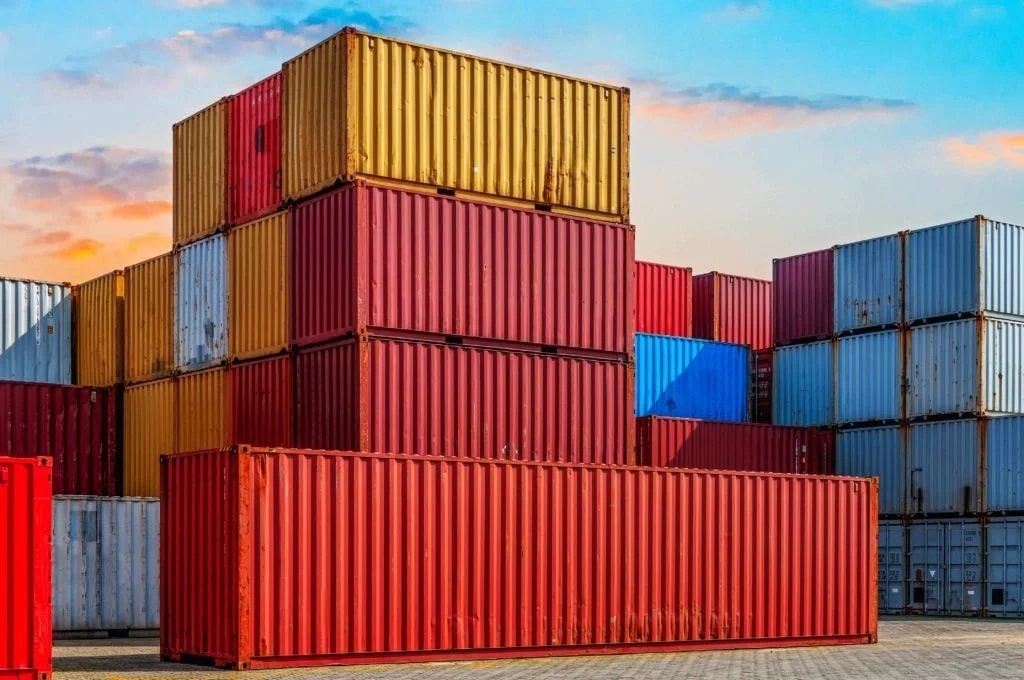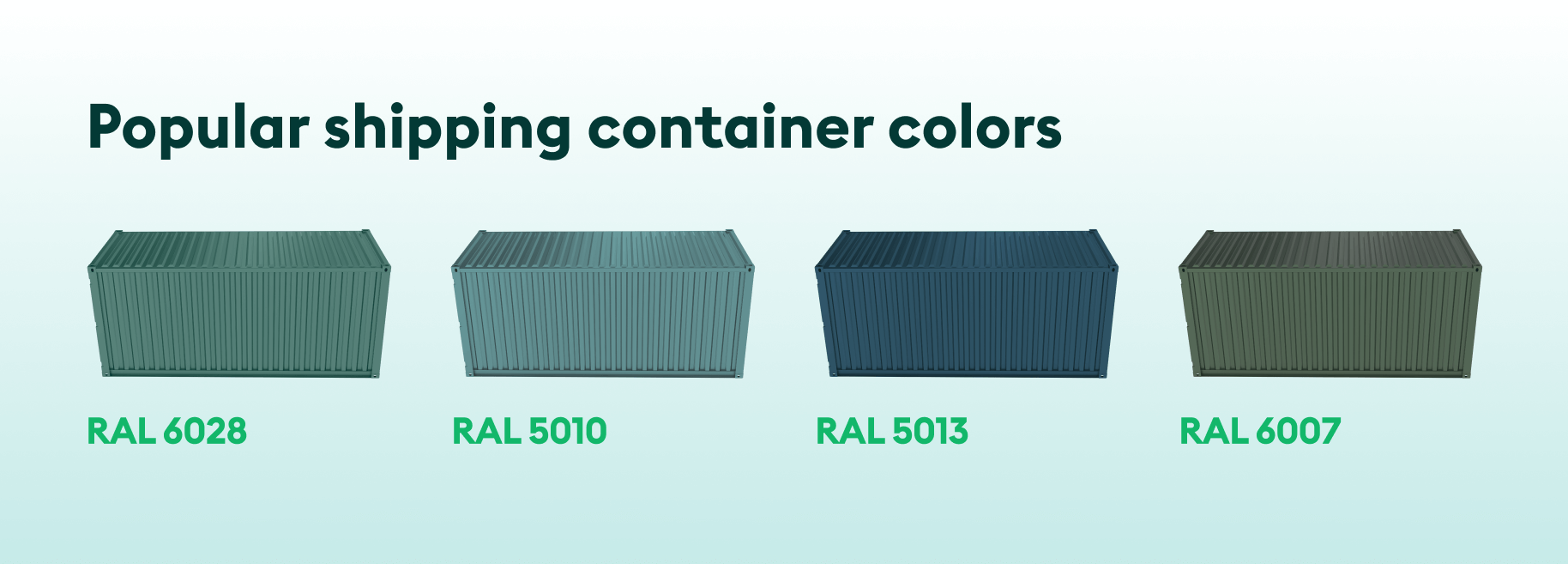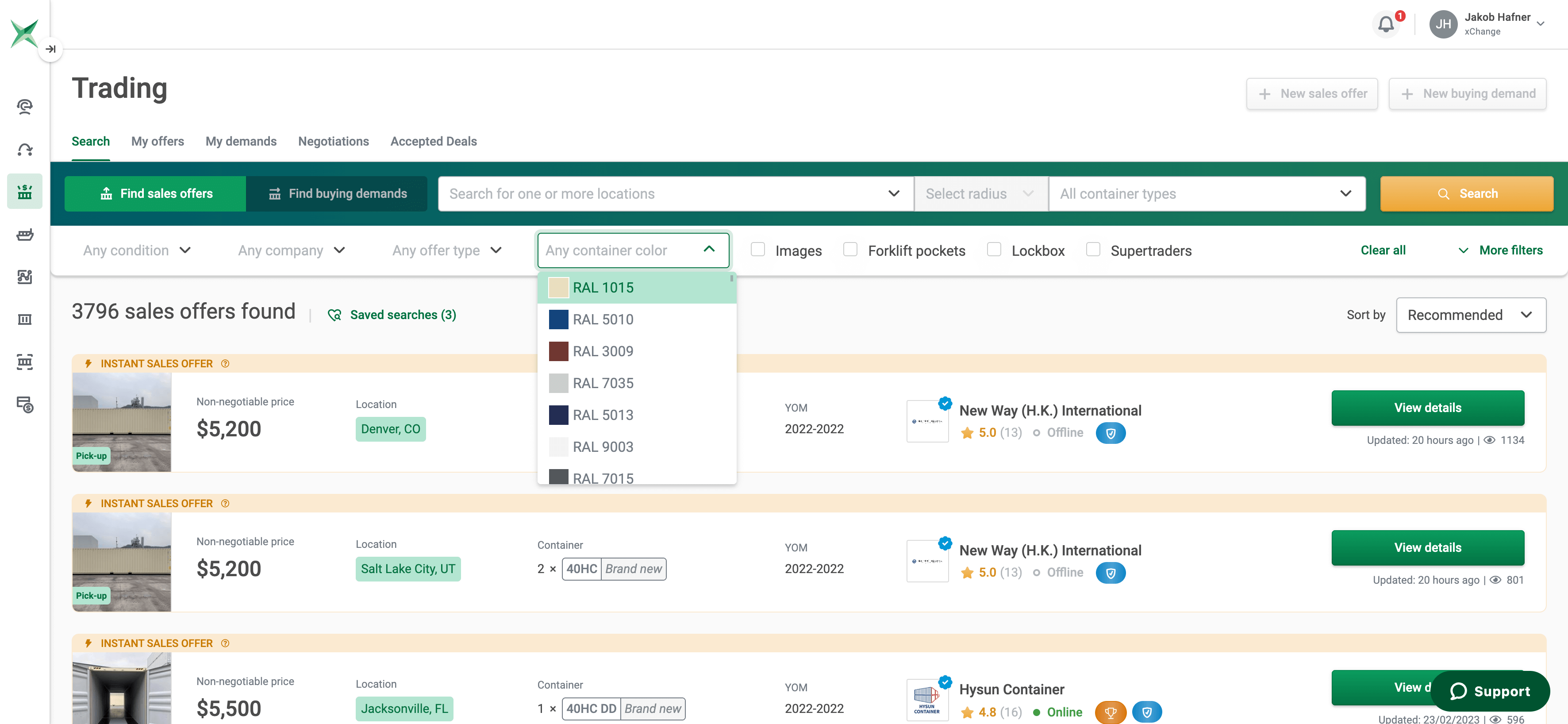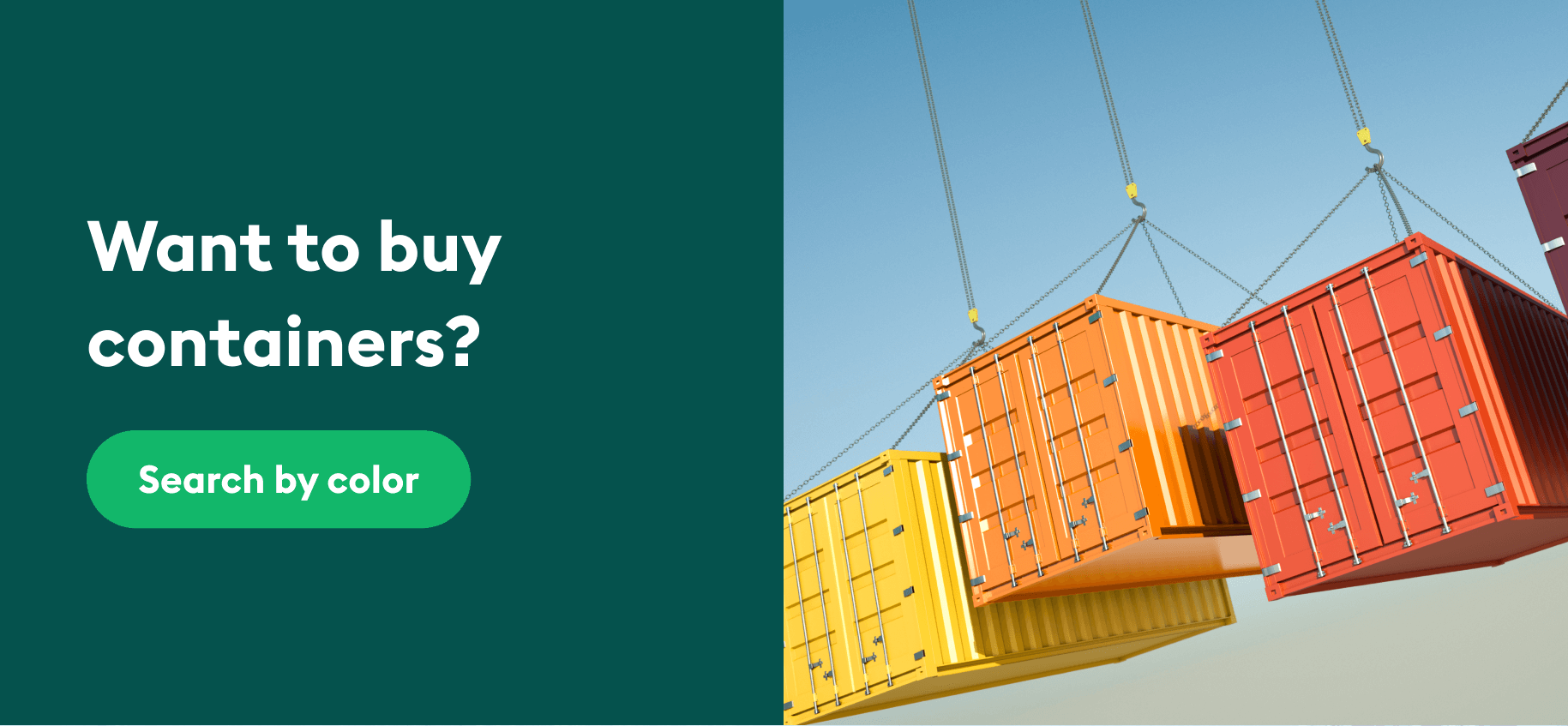Did you know that shipping container colors can have specific meanings? The color of the equipment can tell you a lot about its uses, condition, and ownership. Read on to uncover what the varying shades stand for, plus how you can get the containers you need.
Container colors are more than just aesthetically pleasing. They help us identify container types and conditions, as well as which shipping lines they belong to. Most shipping companies have their own specific color scheme, which helps in sorting and organizing containers efficiently.
If you’re looking for containers for your fleet, Container xChange is the online container marketplace you’ve been searching for. Here you can find containers at the best prices in the colors you need.
Curious to learn more about how you can buy containers at prices that suit your budget? What if we told you that you can try out our trading search for yourself by clicking below? Go ahead! Type in your location and the container type you need to browse buying offers away.
Shipping container colors: Why are shipping containers different colors?
As we mentioned already, there are various reasons for differing container colors. Here are some of the main ones:
- Identification of containers
- Brand association
- Customs compliance
- Weather resistance and temperature control
Overall, knowing about container colors can enhance your understanding of the shipping industry as a whole, and ensure the safe and efficient transport of goods. So let’s keep reading to learn more about why we use different shipping container colors.
Benefits of shipping container colors
Now that we know that containers have different colors for a reason, let’s deep dive into these reasons.
Identification of containers
Brand new containers (one-trip) are often painted in a different color than used, special and storage containers. New equipment usually comes in gray or white, so it’s quick and easy to spot.
These variations in color help operators in depots and facilities to identify and store containers according to their type, as well as by the shipping line or supplier they belong to. This, in turn, eliminates the time-consuming task of checking each individual container for such details.
Brand association
The different colors also help with brand association. Take a look next time and you’ll notice that containers belonging to a particular shipping line will sport that company’s brand colors. The colors on these containers are there for the sole purpose of marketing and brand association purposes.
Here are 5 popular carriers and the colors they use for their containers:
Maersk Line- Light Blue
Mediterranean Shipping Company (MSC)- Yellow
CMA CGM- Dark Blue
COSCO- Blue/white
Hapag-Lloyd- Orange
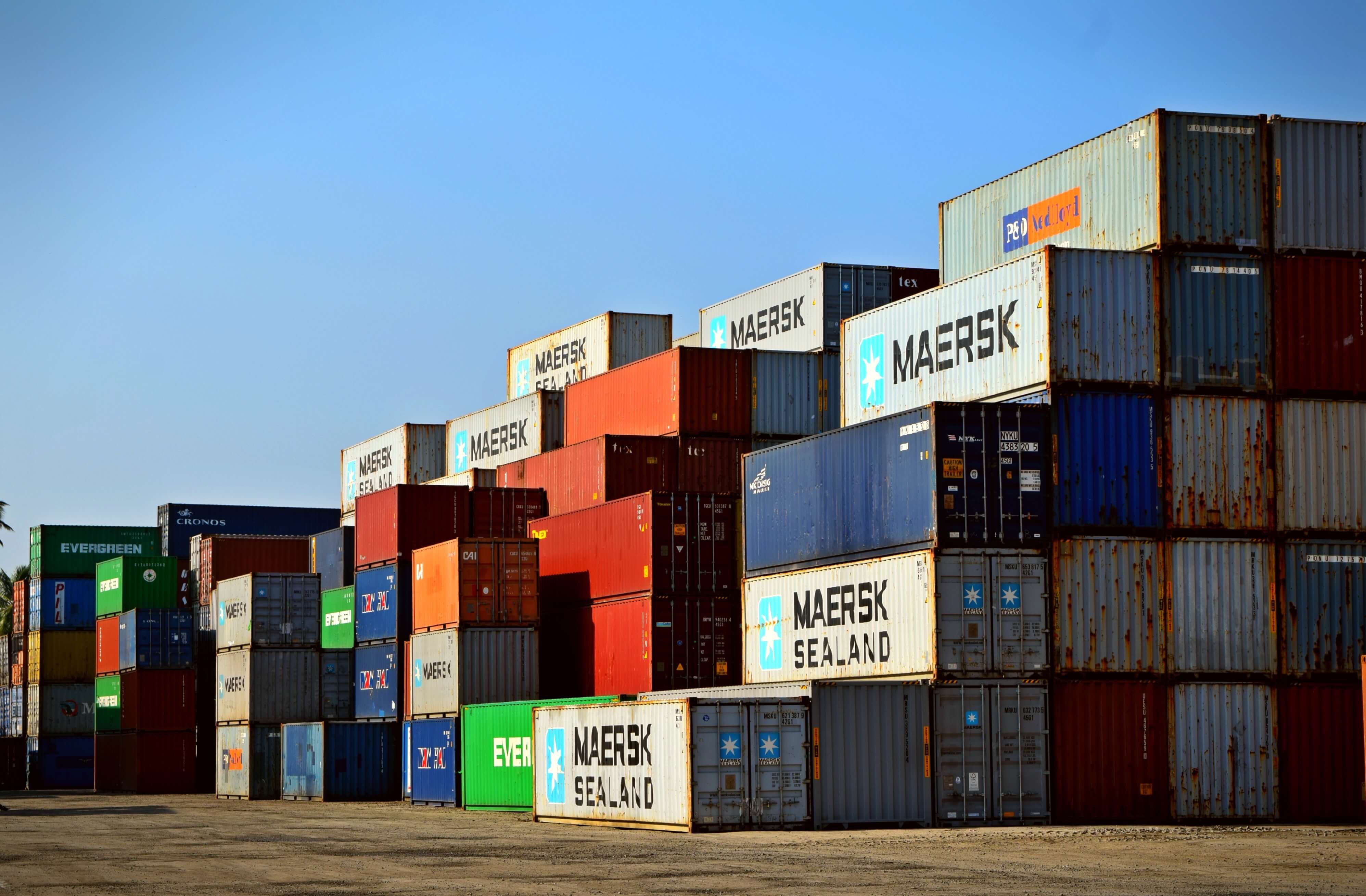
Maersk, Evergreen and other shipping container brands
Customs compliance
Shipping containers need to comply with various safety regulations. Thus, the color of the container helps to indicate its compliance. For example, containers used for transporting hazardous materials are typically painted in specific colors that indicate the type of material being transported. We’ll learn more about which colors are used for which purposes in the next section.
Weather resistance and temperature regulation
Paint colors don’t only serve aesthetic purposes, they’re also used practically to increase weather-resistance and protect cargo from the elements. Container paint is marine-grade and provides a barrier between the steel container body and the external environment. This prevents rust and other forms of corrosion.
Specific colors, such as gray and white, are better at reflecting sunlight. This is why refrigerated containers are usually painted white, keeping temperature-sensitive cargo fresh and cool inside.
Now that we know the main reasons for container shades, let’s learn more about when certain colors are used.
What do the different shipping container colors mean?
It’s time to look more closely at the most popular colors used for shipping containers. Check them out below.
Brown and maroon containers
Brown and maroon containers are also often associated with leasing companies. The reason for this is that darker colors age better than lighter colors. Containers used for leasing and one-way shipping endure frequent moves, so darker shades help to hide scratches, dents and rust. This increases the chances of the containers being leased out in the future.
There are many leasing companies that use maroon containers, including Triton International, Textainer Group, and Florens Container Leasing. Read more about the top leasing companies here.
Blue containers
Blue shades are often associated with standard shipping containers transporting dry cargo such as grains, clothing and electronics. CMA CGM is one such company with dark blue containers.
Green containers
Green is another popular container color used by a variety of shipping lines. This includes Evergreen, China Shipping Line and United Arab Shipping Company (UASC).
Red containers
Some companies use red for their high cube containers, which have an extra foot of height. This helps to differentiate them from standard containers. Brighter colors like red and orange may also be used to indicate that hazardous or toxic substances are being transported inside a container, but this is not an industry standard.
White containers
White is often associated with refrigerated (reefer) containers. As mentioned earlier, this is because lighter colors reflect sunlight better than darker colors, keeping the interior of containers cool in warmer conditions.
Gray containers
Gray is sometimes associated with military or government shipments. It’s also a popular color for reflecting sunlight and keeping goods cool inside.
| NOTE:
It’s important to note that the color schemes mentioned above are not universal, and different shipping companies use different colors for varying container types, sizes and conditions. |
Want containers in specific colors for your shipping requirements? It’s your lucky day because you can get containers in a variety of colors, sizes and types on Container xChange. Why not check it out for yourself by clicking below to start browsing containers right now?
What is the RAL color chart?
The RAL is a European color-matching system. It determines the colors for paint, coatings, and plastics. It’s a universally known color chart across various industries, including shipping, automotive and electronics. ‘RAL’ stands for ‘Reichs-Ausschuß für Lieferbedingungen und Gütesicherung’. In English, this reads as ‘Imperial Commission for Delivery Terms and Quality Assurance’.
The RAL chart is made up of over 200 standardized color swatches, each with a unique four-digit code, making it easy to communicate and replicate colors accurately across various industries. This system is particularly popular in the coating and paint industries, where accurate color matching is critical for achieving a desired finish or effect.
In the shipping industry, the RAL is mainly used for varnish and powder coatings, as well as industrial finishes on shipping containers.
So now you know all about the RAL, and which colors are the most popular for containers. Great!
‘But how do I get containers in specific colors for myself?’, you might be wondering. We’re here to help you get all the answers you need in the next section.
How to find shipping containers in the colors you need
Finding the container types and sizes in the colors you need is quick and easy on Container xChange. Choose from 50,000+ containers available in over 2,500 locations around the globe, at prices that suit your budget. Sounds good right? So let’s get started!
Decide on your criteria
First things first, decide on exactly what types of containers you want. If you’re shipping dry goods, you’ll need a dry container; for frozen cargo, a reefer; and for vehicles, use a double-door. Learn more about the different types of containers and their uses here.
Next, decide on the container condition that suits your needs and budget. In most cases, cargo-worthy containers are more than adequate, as they’ve been inspected and certified safe for shipping. They’re also considerably cheaper than new (one-trip) containers. Learn all about shipping container conditions in this blog post.
Then, depending on the type of cargo, choose the color you want your containers to be.
Browse available offers
Once you’re a member of Container xChange, navigate to our trading platform, type in your criteria, and hit ‘search’ to start browsing available offers.
You’ll be able to see all prices upfront. And compare the costs, terms and conditions for multiple offers simultaneously. This way, you can make sure you’re getting the best deal for your unique budget and requirements. You can also filter the offers based on the RAL colors you’re looking for.
Negotiate the price, terms and conditions
Once you’ve narrowed down the best option, it’s time to negotiate the price and any terms and conditions you’d like to alter. Luckily, this is quick and easy with our chat feature. You can speak directly to suppliers — no fuss, no middlemen.
Once you’re 100% happy with every aspect of the offer, it’s time to sign the deal and make the payment.
Make 100% safe payments
Want to know another benefit of using xChange for your container trading? All payments are completely safe and secure on our platform. With the xChange Wallet, manage and track your finances in one convenient place. Plus, receive just one invoice at the end of each month — it doesn’t get simpler than that!
Get shipping containers of various colors on Container xChange
Finding great deals on the containers you need has never seemed easier, right? Before we tell you the next steps, here’s a quick summary of the benefits you can expect once you’re a member:
- 50,000+ shipping containers available in over 2,500 locations
- Work with vetted and reliable partners
- Safe payment handling
- Negotiable prices + 0% commission on deals
- Work directly with suppliers: No middlemen
So, let’s get you started with a demo of our platform, conducted by one of our friendly and helpful experts. Here you’ll get a sneak peak of xChange, plus a chance to ask any burning questions you may have. If you’re ready to find containers in various colors and locations, at prices that suit your budget, click below now.
What do the colors on shipping containers mean?
Shipping container colors have a range of meanings. These include helping to identify the container type, condition or shipping line they belong to.
What is the most common shipping container color?
There is no common color as such, the colors really depend on the container type and the shipping line.
What kind of paint is used on shipping containers?
Marine-grade paint is used for shipping containers. This paint is exceptionally durable and provides quality protection from the external elements.
Do shipping container colors matter?
Yes shipping container colors matter, because they’re often used to identify the type of container, as well as what it’s used for. They may also indicate which shipping line or supplier a container belongs to.
![Shipping container colors: Ultimate guide [& Top 7 shades]](https://www.container-xchange.com/wp-content/uploads/2022/08/Popular-shipping-container-colors.png)
